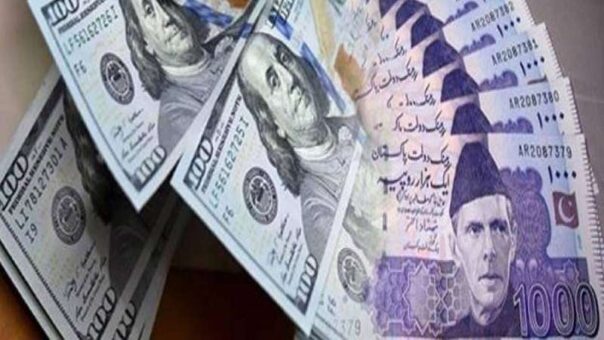Karachi, July 29, 2024 – The Pakistani Rupee weakened by 16 paisas on Monday, closing at PKR 278.50 against the dollar in the interbank foreign exchange market. This marks a slight decline from the last closing rate of PKR 278.34 on July 26, 2024.
Currency analysts indicated that the rupee was under pressure against the dollar on the first trading day of the week. The increased demand for dollars, driven by import and corporate payment requirements, contributed to the rupee’s depreciation.
Additionally, the fall in the rupee’s value has been attributed to a decline in the foreign exchange reserves of the State Bank of Pakistan (SBP). According to the SBP, the overall foreign exchange reserves fell by $369 million, decreasing from $14.704 billion the previous week to $14.335 billion. This broader decline in reserves underscores the challenges faced by Pakistan’s economy, particularly in managing external debt and sustaining reserve levels.
The dip in reserves is a critical issue, as it affects the country’s ability to meet its international financial obligations and maintain currency stability. The reduced reserves limit the SBP’s capacity to intervene in the foreign exchange market to support the rupee.
Looking ahead, experts believe that the rupee will remain range-bound against the dollar in the coming days. The anticipated inflows from the International Monetary Fund (IMF) under the $7 billion Extended Fund Facility (EFF) are expected to provide some support to the rupee. These funds are crucial for bolstering the country’s reserves and alleviating some of the pressure on the local currency.
The ongoing negotiations with the IMF and the successful disbursement of funds are key factors that could influence the rupee’s trajectory. A positive outcome would not only enhance the reserve position but also restore investor confidence, potentially leading to a more stable exchange rate environment.
However, the underlying structural issues, such as the high import bill, energy sector deficits, and fiscal imbalances, continue to pose significant challenges. Addressing these issues is essential for achieving long-term economic stability and reducing dependency on external financial assistance.
The Pakistani rupee’s recent weakening against the dollar reflects the broader economic challenges facing the country. While short-term relief from IMF inflows may provide some stability, comprehensive structural reforms are necessary to ensure sustained economic growth and currency stability. As the situation evolves, market participants and policymakers will be closely monitoring the developments to navigate the complex economic landscape.
